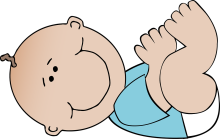Recent Publications

Nasser Sakran: Metabolic Bariatric Surgery Across the IFSO Chapters: Key Insights on the Baseline Patient Demographics, Procedure Types, and Mortality from the Eighth IFSO Global Registry Report (Obes Surg .)
The International Federation for Surgery for Obesity and Metabolic Disorders (IFSO) Global Registry aims to provide descriptive data about the caseload and penetrance of surgery for metabolic disease and obesity in member countries. The data presented in this report represent the key findings of the eighth report of the IFSO Global Registry.

Rola Khamisy-Farah:Investigating and Practicing Orthopedics at the Intersection of Sex and Gender: Understanding the Physiological Basis, Pathology, and Treatment Response of Orthopedic Conditions by Adopting a Gender Lens: A Narrative Overview (Biomedici
In the biomedical field, the differentiation between sex and gender is crucial for enhancing the understanding of human health and personalizing medical treatments, particularly within the domain of orthopedics. This distinction, often overlooked or misunderstood, is vital for dissecting and treating musculoskeletal conditions effectively. This review delves into the sex- and gender-specific physiology of bones, cartilage, ligaments, and tendons, highlighting how hormonal differences impact the musculoskeletal system's structure and function, and exploring the physiopathology of orthopedic conditions from an epidemiological, molecular, and clinical perspective, shedding light on the discrepancies in disease manifestation across sexes.
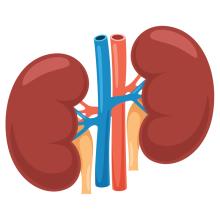
Afif Nakhleh, Naim Shehadeh: Real-world effectiveness of sodium-glucose cotransporter-2 inhibitors on the progression of chronic kidney disease in patients without diabetes, with and without albuminuria (Diabetes Obes Metab .)
Examines the renal effects of sodium-glucose cotransporter-2 (SGLT2) inhibition among non-diabetic individuals with chronic kidney disease (CKD) in a real-world setting.

David Carmon: Association Between Acquired Punctal Stenosis and Ocular Surface Disease: the Egg and the Chicken Story (Semin Ophthalmol . )
This study explores the relationship between acquired punctal stenosis (PS) and ocular surface disease (OSD), assessing causal mechanisms and clinical impacts, utilizing a combination of a comprehensive literature review and a detailed analysis of a patient cohort from a tertiary care center.
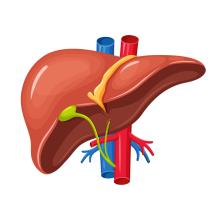
Manar Hijaze Awad, Meital Gal-Tanamy: Unmet needs in the post-DAA era: the risk and molecular mechanisms of hepatocellular carcinoma after HCV eradication (Clin Mol Hepatol .)
Hepatitis C virus (HCV) is one of the major etiologies of hepatocellular carcinoma with approximately 30% of HCC being due to HCV infection worldwide. HCV eradication by antivirals greatly reduces the risk of HCC; nevertheless, HCC remains to occur in CHC patients who have achieved a sustained virological response (SVR). The proportion of post-SVR HCC among newly diagnosed HCC patients is increasing in the DAA era and might be due to preexisting inflammatory and fibrotic liver background, immune dysregulation between host and virus interaction, as well as host epigenetic scar, genetic predispositions and alternations. By means of applying surrogate markers and adopting risk stratification, HCC surveillance should be consistently performed in high-risk populations. In this review, we discuss the possible molecular mechanism, risk factors and surveillance strategy for HCC development after HCV eradication.
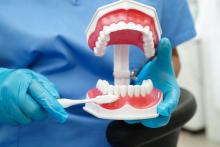
Shiran Sudri, Yasmin Ghantous, Imad Abu El-Naaj: Pediatric Maxillofacial Infections During COVID-19: What Have We Learned? (J Oral Maxillofac Surg .)
The COVID-19 pandemic significantly affected health care systems worldwide, and the field of dentistry is no exception. Odontogenic infections in pediatric patients pose unique challenges to treatment and diagnosis. The purpose of this study was to evaluate the incidence, characteristics, and treatment of pediatric maxillofacial odontogenic infections during COVID-19 compared to pre-COVID-19.
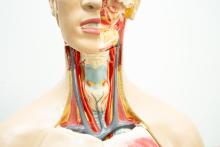
Or Sror-Turkel, Nidal El-Khatib, Adi Sharabi-Nov, Yaniv Avraham, Shlomo Merchavy: Low TSH and low T3 hormone levels as a prognostic for mortality in COVID-19 intensive care patients (Front Endocrinol (Lausanne) . )
Coronavirus diasease 2019 (COVID-19) can cause both pulmonary and systemic inflammation, potentially determining multi-organ dysfunction. The thyroid gland is a neuroendocrine organ that plays an important role in regulating immunity and metabolism. Low serum levels of thyroid hormones are common in critical disease situations. The association between low thyroid hormone levels and mortality in COVID-19 intensive care patients has yet to be studied.

Mary Rudolf: Children on the Gaza-Israel Border: Victims of War (Public Health Rev . )
In Israel and Gaza, following the atrocities of 7 October 2023 and the ensuing war, children cannot fail to wonder, “Am I next?”. Adults are at a loss for reassuring words.
Armed conflict damages the physical and mental health of children. War disrupts the social determinants of health as well as the healthcare systems designed to maintain it....The situation of the children in Gaza is acute, but we must remember, there are children on both sides of this war-torn border. As experts in public health, our professional knowledge and experiences fill us with fears for the future, especially that of the children. Preserving their health and safety is a security issue for the entire region.

Avi Benov: The Association Between ADHD in Adolescence and Injury in Early Adulthood in Israel: A Nationwide Historical Cohort Study (J Atten Disord . )
Examine the association between late adolescence ADHD and the risk of serious injury in early adulthood.
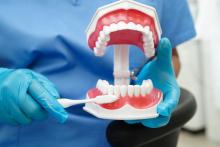
Amal Bader Farraj, Miryam Rabin, Shmuel Einy: Evaluating the Effects of Carriere Motion Appliance and Twin Block Appliances in Class II Correction-A Retrospective Study (Dent J (Basel) . )
This retrospective study compared Class II orthodontic non-extraction treatment using Carriere Motion Appliance (CMA) and Twin Block (TB) appliances.
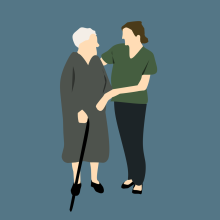
B N Francis: The Impact of Delirium on Recovery in Geriatric Rehabilitation After Acute Infection (J Am Med Dir Assoc . )
Delirium is common during acute infection in older patients and is associated with functional decline. Geriatric rehabilitation (GR) can help older patients to return to their premorbid functional level. It is unknown whether delirium affects GR outcomes in patients with acute infection. We evaluated whether delirium affects trajectories of activities of daily living (ADL) and quality of life (QoL) recovery in GR after COVID-19 infection.
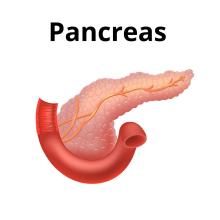
Gal Reches, Lynn Khoon, Narmeen Ghanayiem, Assaf Malka, Ron Piran: Controlling autoimmune diabetes onset by targeting Protease-Activated Receptor 2 (Biomed Pharmacother .)
Type 1 diabetes (T1D) is a challenging autoimmune disease, characterized by an immune system assault on insulin-producing β-cells. As insulin facilitates glucose absorption into cells and tissues, β-cell deficiency leads to elevated blood glucose levels on one hand and target-tissues starvation on the other. Despite efforts to halt β-cell destruction and stimulate recovery, success has been limited. Our recent investigations identified Protease-Activated Receptor 2 (Par2) as a promising target in the battle against autoimmunity. We discovered that Par2 activation's effects depend on its initial activation site: exacerbating the disease within the immune system but fostering regeneration in affected tissue.

Jacob Bornstein: Interstitial cystitis/bladder pain syndrome: when part of the posterior fornix syndrome is potentially curable surgically (Ann Transl Med. )
Interstitial cystitis/bladder pain syndrome (IC/BPS) is defined as chronic pelvic pain plus a bladder symptom, usually urge. Evidence is offered to show IC/BPS forms part of the posterior fornix syndrome (PFS), which was defined in 1993 as: chronic pelvic pain (CPP), urge, frequency, nocturia, abnormal emptying, post-void residual urine, caused by uterosacral ligament (USL) laxity and cured or improved by USL repair.

Jacob Bornstein: Chronic pelvic pain of "unknown origin" in the female (Ann Transl Med .)
The remit of this review is confined to the experimental scientific works and surgeries based on the Integral Theory Paradigm (ITP). Chronic pelvic pain (CPP) is a major societal problem which is said to occur in up to 20% of women. The pathogenesis of CPP of "unknown origin" is said to be unknown and CPP is said to be incurable. According to the ITP, however, CPP is said to be mainly caused by the inability of loose or weak uterosacral ligaments (USLs) to mechanically support visceral nerve plexuses (VPs), T11-L2 and S2-4.



